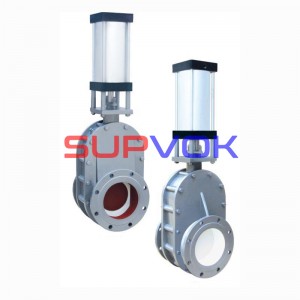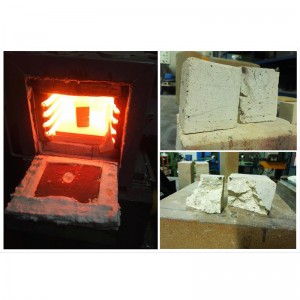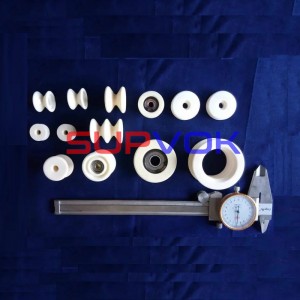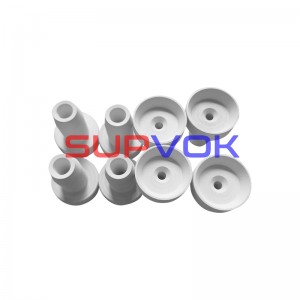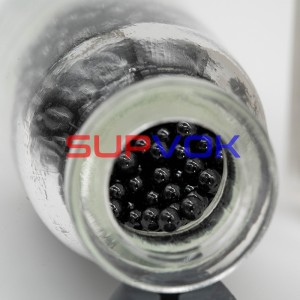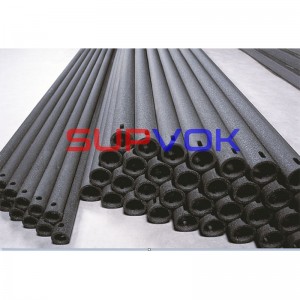Silicon nitride ceramic guide rollers, ring, and tubes
Application
Silicon nitride ball valves are widely used in photovoltaic, coal chemical, electric power, metallurgy, petroleum, petrochemical and other industries.
The silicon nitride ball valve with silicon nitride ball and valve seat as the core has the characteristics of erosion resistance, corrosion resistance, high and low temperature resistance. At the same time, the silicon nitride ball valve has self-lubricating property, low friction coefficient in the process of valve opening and closing, closer coupling between valve core and valve seat, better sealing performance, and its service life is dozens of times that of ordinary steel ball valves.
The floating ball valve of our company adopts the full bore structure design, and the one-piece or two-piece cast (forged) valve body. Through the quantitative compression of the reliable sealing ring, the sealing problem of the middle flange is solved to ensure no leakage.
The large diameter floating ball valve is designed with a drift diameter structure. The two or three body cast (forged) valve body is integrally filled with a letter. The leakage at the filling section is avoided. The middle flange seal adopts quantitative compression to avoid leakage.
Floating ball valves are widely used in silicon chemical industry, coal chemical industry, electric power, metallurgy, petroleum, petrochemical and other industries. They can achieve single or two-way sealing according to requirements. They have a long service life and good sealing performance in response to severe working conditions.
Application of silicon nitride guide roller in casting industry
Compared with metal guide roller and alloy guide roller, silicon nitride guide roller has more advantages in high temperature resistance, high hardness, high toughness, impact resistance and oxidation resistance; At the same time, the silicon nitride guide roller is oil-free, self-lubricating, low density, light weight, and its service life is more than ten times that of the alloy guide roller.
Silicon nitride heat shields and magnetic rings are mainly used to protect high-voltage electrodes and are widely used in the photovoltaic industry.
The heat shield and magnetic ring, as well as the ceramic ring, are collectively referred to as electrode protective shield.
Silicon nitride electrode protective cover is mainly used for the insulation, heat resistance and corrosion resistance of silicon nitride. Compared with quartz and aluminum oxide protective covers still in use, the service life of silicon nitride electrode protective covers is more than 10 times that of silicon nitride electrode protective covers, and they will not be electrocuted, heated, or corroded during use. Due to its stability, there is much less non-human factors in the use of photovoltaic reduction furnace.
Silicon nitride (Si3N4) high thermal conductivity substrate
High thermal conductivity silicon nitride ceramic substrate
Features
►High strength: Bending strength is about twice that of AL2O3 and ALN substrates.
►High thermal conductivity: It is more than 3 times higher than AL2O3 substrate.
►Light and thin: its thickness can reach 1/2 of AlN substrate
►Excellent thermal shock resistance: its thermal expansion coefficient is close to that of silicon.
|
Item |
Unit |
Al2O3 |
AIN |
Si3N4 |
|
|
Density |
g/cm2 |
3.75 |
3.3 |
3.22 |
|
|
Thickness |
mm |
0.3175~1.0 |
0.4~2.5 |
0.238~0.635 |
|
|
Surface roughness level (Ra) |
μm |
0.4 |
0.2 |
0.4 |
|
|
Mechanical properties |
bending strength |
Mpa |
310~400 |
300~450 |
650 |
|
Young's modulus |
Gpa |
330 |
320 |
310 |
|
|
Vickers hardness |
Gpa |
14 |
11 |
15 |
|
|
fracture toughness |
Mpa.ml/2 |
3~4 |
2~4 |
5~7 |
|
|
Thermal expansion coefficient |
10 -6/K |
7.1~8.1 |
4.5~4.6 |
2.6 |
|
|
Thermal conductivity |
W/(m.K) |
20~30 |
160~255 |
60~120 |
|
|
Specific heat |
J/(kg/K) |
750 |
720 |
680 |
|
|
Electrical characteristics |
Dielectric constant |
/ |
9~10 |
8~9 |
7~9 |
|
Dielectric loss tangent |
...10-3 |
0.2 |
0.3 |
0.4 |
|
|
Volume resistivity |
Ω.m |
>1012 |
>1012 |
>1012 |
|
|
Breakdown voltage |
kv/mm |
>12 |
>14 |
>14 |
|





